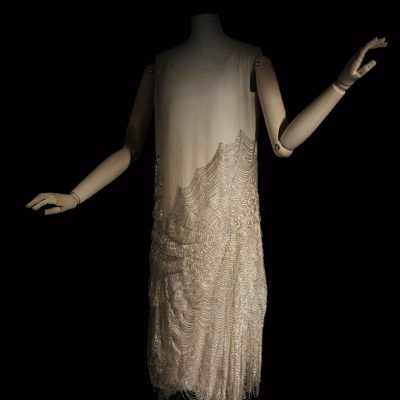
Designers 15.01.2019
08.10.2019
1910s1920s1930sFrench fashionlogo
The story of the brand all enclosed in the original logo
The logo depicts two figures, a mother and a daughter, holding hands and looking at each other. It was designed by artist Paul Iribe after a photo of Jeanne Lanvin and her Daughter Marguerite. It was indeed Marguerite the muse behind the success of the Lanvin brand. In fact, Jeanne’s motherly love inspired the custom designs she starting making for her daughter in the early 1900s. Since 1890s, Jeanne was running a quite successful millinery shop in the Rue de Faubourge St. Honore, but her passion was all for dressing her beautiful daughter. This led to the creations of clothes for children that became all the rage with the fashionable Parisian, and motivated Madame Lanvin to quickly switch to Couture.
Lanvin’s success grew throughout the 1920s and 1930s. Thanks to her capabilities and knowledge of the female body, the techniques of dressmaking, and her taste for fresh and feminine styles, she introduced a youthful aesthetic that blurred the lines between childrens’ clothes and womenswear. All these influences reflected in her popular “robe de styles”, very popular in the Twenties. Her patterns were simple, but her creations were richly embellished with embroidery, appliques and ribbons. Colour was another code for Lanvin, particularly the “Lanvin Blue”, inspired by a fresco of Fra Angelico that Jeanne saw in Florence.
Her daughter Marguerite remained the most important drive behind all her moves. In 1924 she opened the Lanvin Parfums SA, introducing her signature fragrance, Arpège, in 1927. The name of the fragrance was inspired by the sound of her daughter Marguerite practicing her scales on the piano.
After Jeanne passed away in 1946, her daughter took over for a short time, followed by several designers over the next decades. From 1999 to 2016 designer Alber Elbaz worked to restore Lanvin’s glory and reinstalling the house’s signature codes. He was then followed by Bouchra Jarrar and then by Olivier Lapidus, even though both lasted less than a year as creative directors, leaving the brand without a designer guiding the creative output and fostering the legacy of one of the most well-known names of French fashion history.